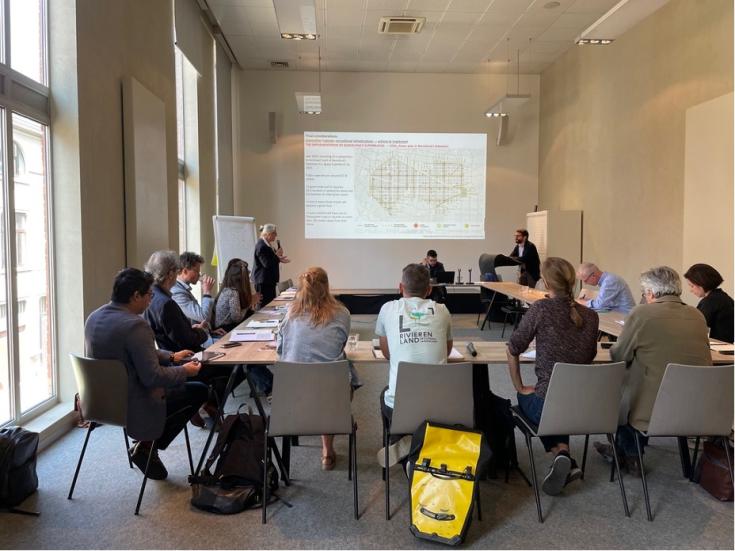Connecting green spaces in Antwerp

On 1 June 2023, the Policy Learning Platform organised a matchmaking at the request of the Regional Landscape ‘De Voorkempen’ in Antwerp, to explore new ways of supporting and implementing policies to restore and connect Antwerpian green spaces.
The focus was on interlinking biodiversity hotspots, for example through green corridors or green belts: how to ensure context-appropriate processes and concepts to successfully manage a project connecting green spaces? How can recreational infrastructures be also embedded in the project? How to face the challenge of fragmented green spaces and the residents’ inability to access them?
Key takeaways
Explore the key takeaways of the matchmaking session:
- Green infrastructure should be approached as a strategic planning tool. Federico Camerin described an example from Barcelona utilising the so-called green superblocks, which are built up and joined together, making green infrastructure integral in the city’s spatial plans. In Norfolk, a local nature recovery strategy employs a combined approach to habitats and recreation, prioritizing and mapping the most valuable areas.
- Plans can be updated frequently (once every three months) to ensure continuity.
- Thematic planning and strategic documents can be game changing: the aim is to create a regional platform to build trust, develop long term strategies and solutions – while also providing guidance, organising workshops, sharing knowledge, coordinating and consolidating different stakeholders.
- There should be a balance between tourism and conservation, which can be aided by interconnecting the concepts of green infrastructure and sustainable mobility.
- It is recommended to map out all green infrastructure (“green space inventory”) and review local development plans.
- Qualitative assessment of impacts and benefits of the interventions can be incorporated, including interviews with residents.
- Everyone should have access to green spaces: for example, in Norfolk there are different sizes of green spaces and their average distance to households: doorstep (within 200 m), local (within 400 m).
- It is possible to choose a wide approach and develop a metropolitan plan, like the Irish Southern Regional Assembly did with Cork, Limerick and Waterford.
- Model interventions/pilot projects can demonstrate how impact can be increased and access to green spaces improved.
- It is key to go from strategic planning to implementation with initial projects (stop planning, start acting), involving frontrunners and continuously bringing interested stakeholders together.
Host and participants
Hosts:
- Wim Debaene, Regional Landscape 'de Voorkempen'
- Maud Willemen, Regional Landscape Riverland
- Luc Olyslager, Fortengordels & Simon Stevin
- Britt Biermans, Province of Antwerp dept Environment and Nature
Peers and shared expertise:
- Federico Camerin, from the University of Valladolid, presenting nature-based solutions in Barcelona and Valladolid
- Dominic Walsh from the Blue Green City project, talking about the ‘Waterford Greenway’ in Southern Ireland
- Marcin Spyra from the RENATUR project discussing several examples of green belts, including the belts of Saxony-Anhalt (Germany) and Vitoria Gasteiz
- Cherry Harper Jones from BID-REX presented green infrastructure projects and strategies of greater Norwich (UK)
Interreg Europe programme and Policy Learning Platform:
- Mariame Ammour, Interreg Europe Policy Officer
- Diane Bulon, Interreg Europe Policy Officer
- Astrid Severin, Interreg Europe PLP Thematic Expert, Environment and resource efficiency
- Magda Michaliková, Interreg Europe PLP Thematic Expert, Environment and resource efficiency
- Sorush Brandenburg, Interreg Europe PLP Management team
Request your matchmaking
Are you interested in a matchmaking for your region? Submit your request today!

